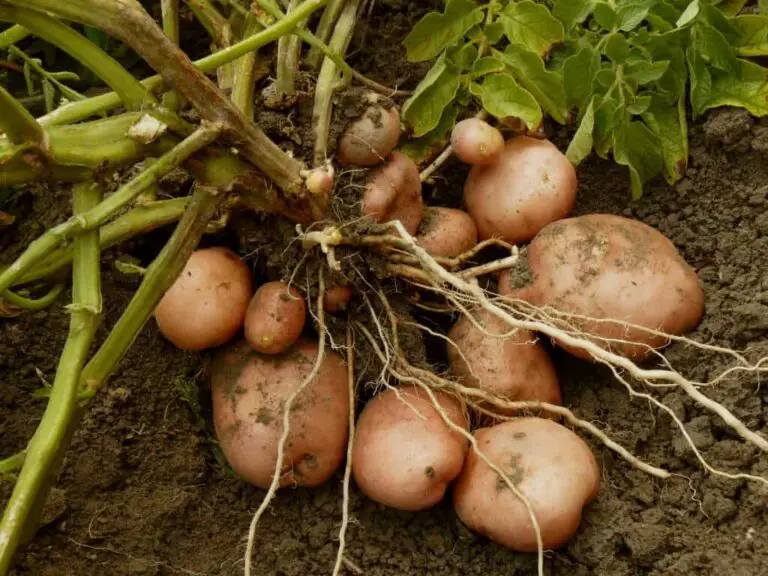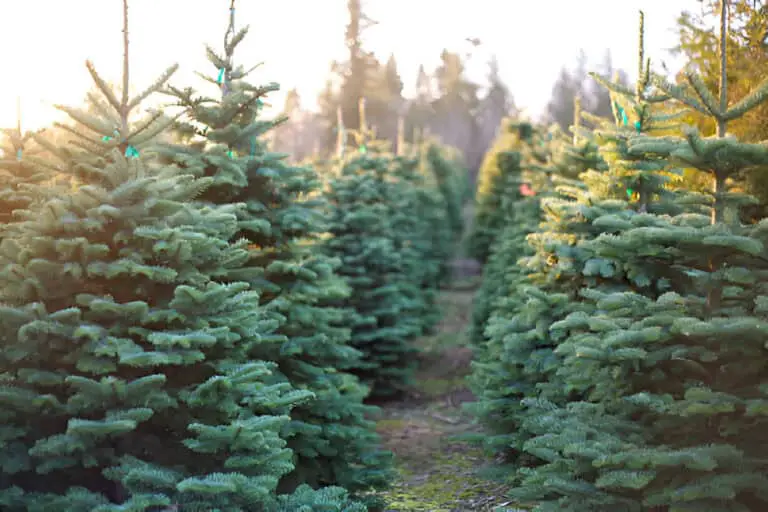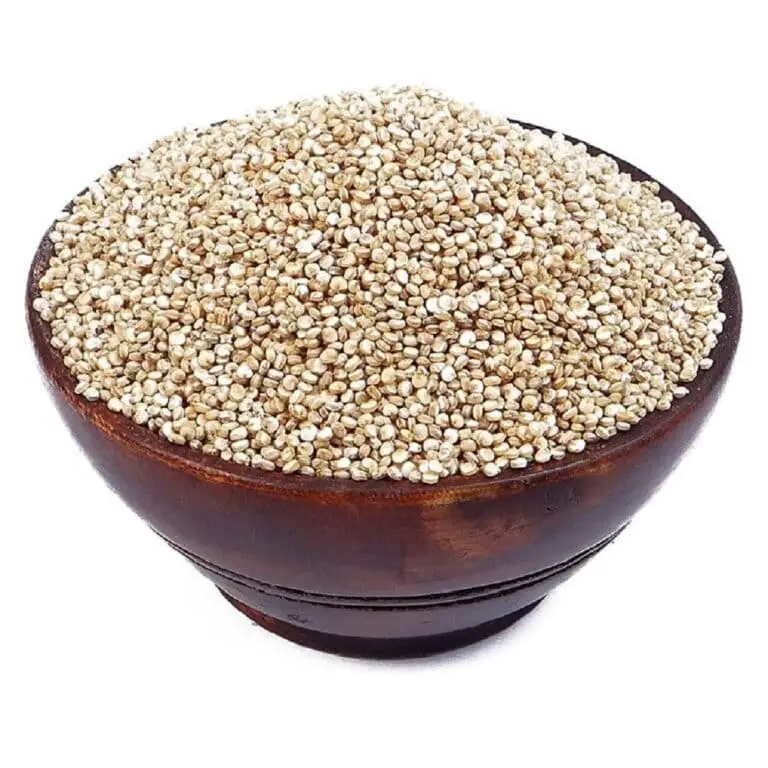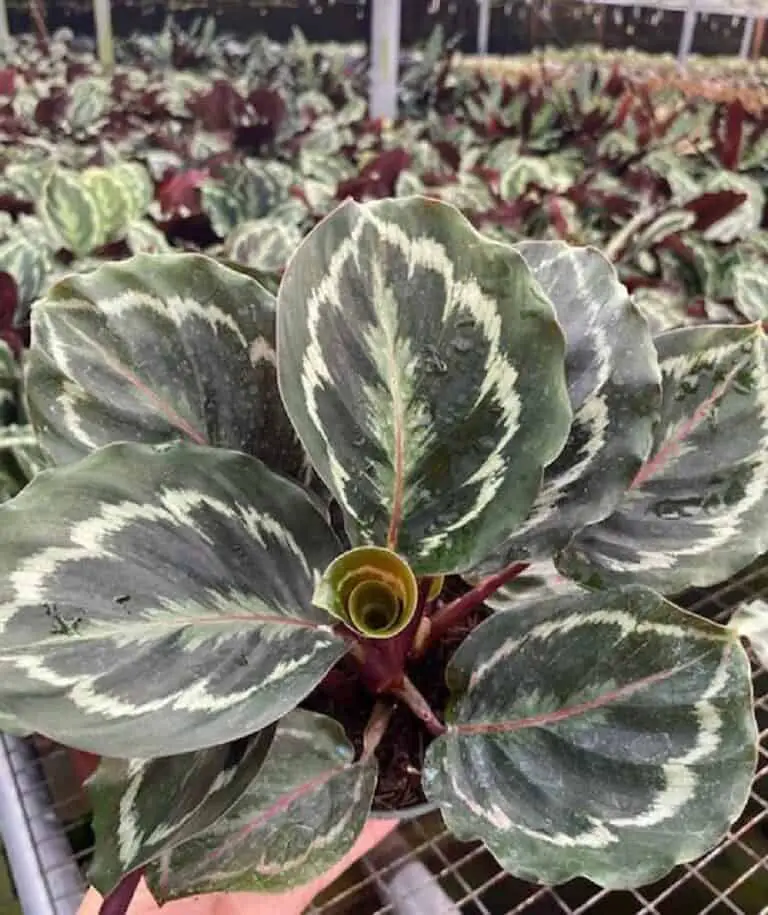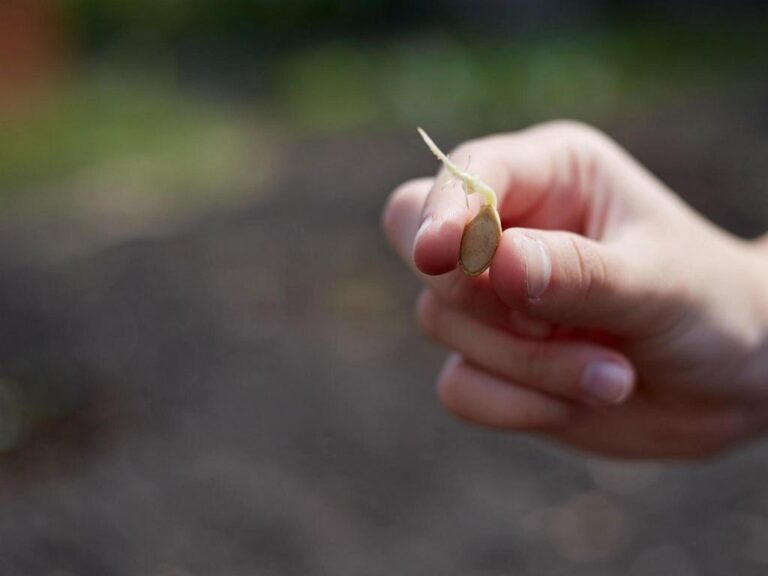Do Green Beans Grow on Trees & Vines? Explained For Beginners
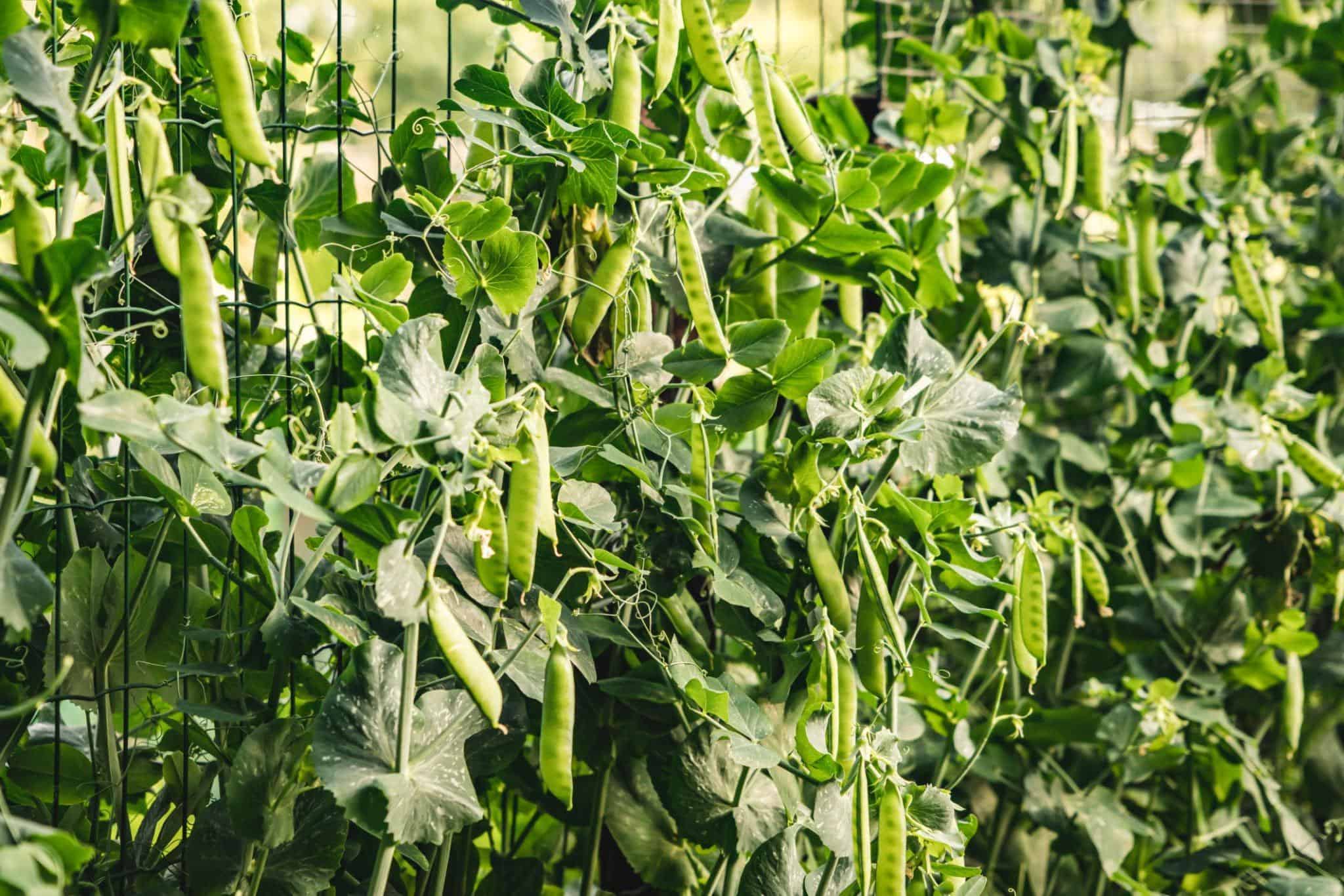
Gardening is a popular hobby among many people, and green beans are a common vegetable to cultivate. Besides giving you a never-ending supply of fresh vegetables, growing your own gives you a chance to connect with nature and explore your creative side.
Green beans are relatively easy to grow compared to other vegetables because they don’t require too much attention or care. They usually take about 50-55 days from planting for their beans to develop and reach maturity, making them a great choice for those just getting started in gardening.
Many people don’t know how to plant and grow this plant from the legume family. One of the most popular questions related to growing green beans is: do green beans actually grow on trees and vines?
While it might seem unlikely, there are indeed species of green beans that grow in this fashion.
But do green beans actually grow on trees or vines?
In this article, we will explore the different types of green beans, the conditions they need to thrive, and answer the question: Do green beans grow on trees & vines?
We will also look at some other interesting facts about this versatile vegetable.
The Growth Process of Green Beans
Green beans, also known as snap beans or string beans, go through a fascinating growth process that involves several distinct stages. Understanding these stages is crucial for successful cultivation.
The growth cycle of green beans typically begins with the germination of seeds, which absorb water and sprout. As the tiny seedlings emerge from the soil, they develop their first set of leaves, signaling the beginning of the vegetative stage. During this phase, the plants focus on establishing a strong root system and growing more leaves to support photosynthesis.
Green bean plants enter the reproductive stage as they get older, which is evident by the appearance of delicate, white flowers. These flowers serve a vital purpose as they attract pollinators like bees, ensuring proper fertilization and the development of bean pods. Once pollinated, the flowers give way to small, green pods that gradually enlarge over time. It is important to monitor the plants closely during this phase to determine the optimal time for harvesting, as overripe pods may become tough and stringy.
Several factors influence the growth and development of green beans. Climate plays a significant role, with most varieties thriving in moderate temperatures between 60°F and 85°F (15°C to 29°C).
Green beans require an adequate amount of sunlight, preferably six to eight hours a day, to promote photosynthesis and healthy growth.
Soil conditions are equally crucial, as green beans prefer well-draining soil with a pH level between 6.0 and 7.0. Additionally, the soil should be rich in organic matter and nutrients, such as nitrogen, phosphorus, and potassium, which support robust plant growth and bean production.
By understanding green bean growth stages and considering the influence of climate and soil conditions, growers can optimize their green bean cultivation and achieve a bountiful harvest. With proper care and attention throughout each stage, these vibrant and nutritious legumes can grace our plates, delighting us with their crispness and delicious flavor.
Are Green Beans a Vine or Bush?
This is a common question asked by many home gardeners looking to expand their vegetable patch. Green beans are actually an annual climbing plant that can be grown as either a vine or bush, depending on the variety chosen.
Vining varieties of green bean plants have long stems that grow up to 15 feet in length, which require some sort of staking or trellising for support. They are usually planted closer together and will produce more beans than bush varieties.
Bush beans, on the other hand, form short, compact plants that do not need any type of support, making them perfect for small spaces with limited vertical growing space. The downside is that they take longer to mature and don’t yield as much per plant as vining types.
Do Green Beans Grow on Trees?
Beans do not grow on trees, but rather on bean plants (Phaseolus vulgaris). Contrary to popular belief, beans are not a type of tree nut.
Beans are classified as legumes, which are part of the Fabaceae family that also includes peas, chickpeas, and lentils. Legumes have the ability to fix nitrogen in the soil, meaning they take in nitrogen from the atmosphere and convert it into a form that other plants can use as fertilizer.
Bean plants typically grow from one to three feet tall with green oval leaves and small white or yellow flowers. The bean pods can grow either directly from the stem or hang off vines that cling to trellises for support. Each plant usually produces one to two pods full of bean seeds that can be harvested when dry and used for cooking or made into flour once ground up.
Do Green Beans Grow on Vines?
Do green beans grow on vines? The answer is a resounding yes! Green beans are an incredibly versatile vegetable that can be grown in many ways.
Some varieties of green beans, such as the bush bean, grow low to the ground in bushy formations.
Other types of green beans, however, will climb up tall poles or trellises when given support. Green bean plants that grow on a pole produce significantly more pods than bush plants.
Some common types of pole beans are Kentucky Blue, Blue Lake Pole, Scarlet Runner, and Kentucky Wonder Pole, which is an heirloom variety.
Growing these “vine” types has the added benefit of making it much easier to find and harvest their crop since the vines can take up just a small amount of space but still provide plenty of vegetables throughout the season.
Snap beans, which are also referred to as “green beans” or “string beans,” are harvested while the pods are still supple and the seeds are still immature.
What Does a Green Bean Tree Look Like
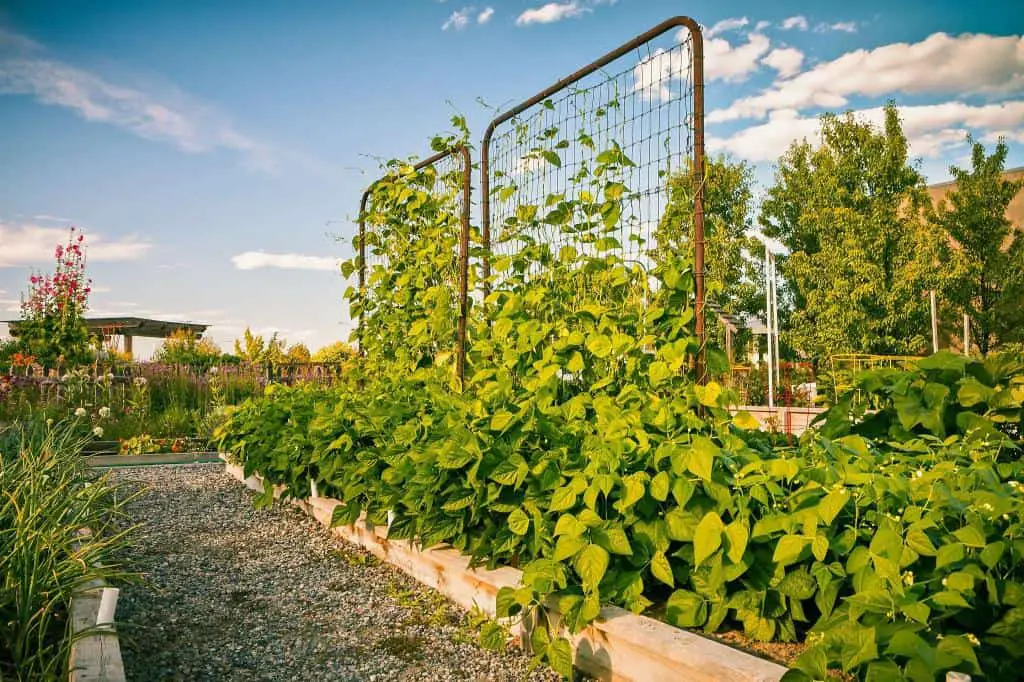
A green bean tree is a type of legume that produces a fruit resembling beans. It is also known as the “green bean bush” or “bush bean” due to its low and spreading growth habit.
The green bean plant usually grows three to four feet tall, with an upright trunk and wide-reaching branches. Its leaves are composed of two small leaflets that are deep green in color and have a smooth texture.
The flowers of the green bean tree are delicate, white blooms that appear in clusters at the base of the stem throughout springtime. These blossoms attract bees and other pollinators, which helps ensure successful fruit production.
Long, slender pods filled with edible green beans that are one to four inches long will take the place of these flowers in the summer.
The green bean tree is an important food source for birds, squirrels, deer, and other animals due to its high nutritional value and abundance of beans throughout the year.
Do Green Beans Require a Support System To Grow On?
As green beans are a vining plant, many gardeners wonder if they need additional support as they grow. Do green beans require a support system to grow on? The answer is both yes and no.
Green beans can be grown without any extra support, but it’s better to give the vines something to climb on for a number of reasons.
If green bean vines don’t have enough support, they will spread out over the ground and be more likely to get sick or be eaten by bugs.
Also, giving the vines something to hold onto gives them a chance to grow higher and produce more fruit than if they were just left to grow on the ground.
Do Green Beans Grow on Underground?
While some legumes, like peanuts, grow their pods underground like most forage legumes, others grow their pods above ground. Green beans and peas are two common examples of this kind of legume.
Like all vegetables, green beans require the right combination of sun, water, and soil in order to thrive. They tend to prefer warm weather and need at least six hours of direct sunlight each day, so it’s important to choose a spot with plenty of sunshine when planting them in your garden. This is why green beans grow above-ground and not underground
There are several key differences between the two types that make them unique additions to gardens and meals alike.
Underground legumes like peanuts are usually harder to grow and harvest than above-ground varieties because they need to be dug up and picked more often.
On the other hand, above-ground legumes are generally much easier to harvest since their pods grow close to the surface. Depending on the variety planted, some may even produce edible shoots or leaves that can add extra flavor to a dish or salad.
Do Green Beans Climb?
Do green beans climb? The answer may surprise you!
Green beans are known to grow best in a garden or pot. But what if we told you that green beans don’t just grow in the ground, but can actually climb up poles, trellises, and other structures?
It’s true—some varieties of green beans (like pole beans) have long vines that can be trained to climb upwards. This climbing technique helps the plant get more sunlight while taking up less space on the ground.
Not only that, but it also produces bigger and better pods for harvesting your delicious and nutritious veggies. So why not give it a try and see for yourself just how well green beans can climb?
Do Green Beans Need a Trellis?
It depends on whether the variety you want to grow is a bush bean or a pole bean. If it is a pole bean, it will require some type of support to climb. You can grow pole beans along a fence or use any type of structure you can think of for the beans to climb.
If pole beans reach the top of the support and you don’t feel like adding more support, you can prune the tops of the plants and encourage side growth that can grow sideways across existing supports.
| Native Americans would plant beans alongside corn and let the beans climb the stalk of the corn. The ways to support your pole beans are endless, and as long as you give these natural climbers a rope to climb, they will make good use of it. |
How Do Beans Grow in the Wild and Natural Environment?
You may have seen beans growing in the fields or in your garden, but how do green beans grow in the wild? The answer may surprise you.
In their natural environment, beans will often grow near other plants such as corn or squash. Together, tall plants that provide shade and bacteria that fix nitrogen help create the best growing conditions for these hardy legumes.
Beans can also grow in dry and salty soil, which means they can do well in soils that don’t have many nutrients.
The wild bean plant is tolerant of most soil types but prefers warm, moist conditions with full sun exposure.
The flowers of wild bean plants attract pollinators such as bees and butterflies to help keep ecosystems balanced while providing sustenance to small animals like birds that feed on their seeds.
Can green beans be grown in containers?
Yes, green beans can be grown in containers, making them suitable for those with limited garden space. Choose bush varieties of green beans that don’t require support. Use containers with good drainage, and provide a trellis or stakes if growing pole beans. Ensure the containers receive at least six to eight hours of sunlight per day, and regularly water the plants to keep the soil moist but not waterlogged.
How long does it take for green beans to grow?
The time it takes for green beans to grow depends on the variety and growing conditions. Generally, green beans take around 50 to 70 days from seed germination to harvest. Bush varieties tend to have a shorter growing period, typically around 50 to 55 days, while pole beans may take slightly longer, around 60 to 70 days. Regular monitoring of the plants is essential to determine the optimal time for harvesting when the beans are tender and before they become tough.
What are some common pests that affect green beans?
Common pests that may affect green beans include aphids, bean beetles, and spider mites. Aphids are small insects that feed on the sap of the plants, while bean beetles and spider mites can cause damage by chewing on the leaves and pods. Regular inspection of the plants and implementing integrated pest management strategies, such as using insecticidal soap or introducing beneficial insects like ladybugs, can help control these pests.
What is the best time to plant green beans?
Green beans are warm-season crops that prefer temperatures between 60°F and 85°F (15°C to 29°C). The best time to plant green beans is after the last frost in spring when the soil has warmed up. This is typically when temperatures consistently stay above 50°F (10°C). Planting too early in cold soil can lead to poor germination and slow growth. Additionally, green beans can be planted for a fall crop, about 8 to 10 weeks before the first expected fall frost.
How do I store freshly picked green beans?
To store freshly picked green beans, start by rinsing them in cold water and patting them dry. Then, place them in a perforated plastic bag or a breathable container like a produce storage bag. Store the beans in the refrigerator’s vegetable crisper drawer, where they can stay fresh for up to one week. Avoid washing the beans before storing, as excess moisture can lead to spoilage. For long-term storage, blanch the green beans by briefly immersing them in boiling water, then freeze them in airtight freezer bags or containers for up to 12 months.

